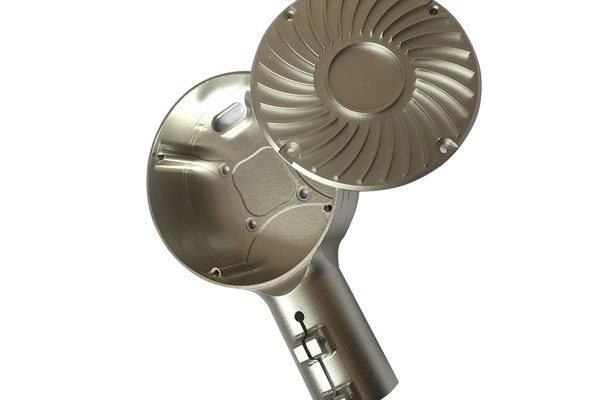Opening: An Eye-Opening Statistic
Did you know that nearly 30% of production costs in machining industries can be attributed to surface treatment quality issues? This staggering statistic highlights a crucial aspect of CNC (Computer Numerical Control) machining—ensuring uniformity and reliability throughout the surface treatment process is vital for meeting quality standards while managing operational costs.
In today’s competitive manufacturing landscape, the quality of surface treatment can directly impact product performance and customer satisfaction. Therefore, understanding how to achieve stability and consistency during the CNC machining process can make or break a company’s success.
—
Understanding the Importance of Surface Treatment in CNC Machining
Surface treatment encompasses various processes designed to enhance the characteristics of a material’s surface. These processes improve properties such as:
In CNC machining, the surface treatment quality is paramount. Inconsistencies can result in defects, lead to higher rejection rates, and negatively impact end-user satisfaction. Consequently, ensuring a stable and consistent surface treatment process is crucial to achieving high-quality products.
Key Surface Treatment Processes in CNC Machining
Several surface treatment processes can be employed in CNC machining to achieve the desired quality. Some of the most common treatments include:
—
Factors Influencing Surface Treatment Consistency
To ensure stability and consistency in surface treatment quality during CNC machining, several factors need to be carefully monitored and controlled:
Choosing the right material is crucial as different materials may react differently to treatments. Understanding the mechanical and chemical properties of the materials being used is vital for achieving the desired surface treatment outcomes.

Machining parameters such as speed, feed rate, tool type, and depth of cut can have significant effects on surface texture and quality. Keeping these parameters in check will minimize the chances of surface inconsistencies.
Variations in temperature, humidity, and contaminants present in the manufacturing environment can affect the surface treatment quality. Keeping the workspace controlled is essential for maintaining stability in surface processes.
Regular calibration and maintenance of CNC machines ensure they operate within specified tolerances. Any discrepancies in the machinery can lead to fluctuations in the surface treatment quality.
Properly trained staff can critically assess processes and apply best practices to maintain consistency. Regular training and updating knowledge regarding the latest technologies and techniques are necessary for executing high-quality surface treatments successfully.
—
Solutions for Achieving Consistency in Surface Treatment Quality
Automation and integration of smart technologies can optimize processes and maintain consistent quality. Utilizing IoT (Internet of Things) devices and sensors can monitor real-time data regarding environmental conditions, machine performance, and treatment effectiveness, facilitating immediate adjustments whenever needed.
Establish clear and detailed SOPs to guide operators through every aspect of the machining and surface treatment processes. From machine setup to operating parameters to quality inspection protocols, these procedures serve as a foundation for consistency.
Implementing a rigorous quality control system that includes systematic inspection and testing ensures that any issues affecting surface treatment quality can be identified and addressed promptly. Using advanced measurement technology can significantly enhance the reliability of inspections.
High-quality CNC machines and surface treatment technologies can improve the capabilities of a shop while also reducing variation in processing quality. Investing in reliable equipment pays dividends in the form of higher precision and less frequent repairs or adjustments.
Creating feedback loops between production teams and surface treatment specialists ensures consistent communication regarding quality issues. Actively seeking input from operators and technicians can help identify areas for improvement in the process.
—
Case Studies: Successful Implementation of Stable Surface Treatment Processes
Case Study 1: Automotive Parts Manufacturer
An automotive parts manufacturer faced inconsistencies in the anodizing process of aluminum components. By implementing automation technologies, the company was able to monitor solution concentration levels, temperature, and pH in real time. This online monitoring led to the identification of variables that resulted in inconsistencies, allowing for remedies that stabilized the process.
Case Study 2: Aerospace Component Supplier
A supplier for the aerospace industry dealt with variability in the quality of electroplated components. After standardizing their operating procedures and training employees thoroughly, they implemented a robust quality control framework. This combination led to a significant reduction in defects, improved part lifespan, and greater satisfaction from their aerospace clients.
—
: Ensuring Quality Through Stability and Consistency
In summary, achieving stability and consistency in surface treatment quality is vital for enhancing the overall performance of CNC machined parts. Factors like material selection, machining parameters, environmental conditions, equipment maintenance, and skilled personnel play pivotal roles in this endeavor.
By adopting solutions such as automation, establishing SOPs, conducting regular inspections, investing in top-tier equipment, and fostering a culture of feedback, manufacturers can enhance their surface treatment processes significantly.
In a world where quality can distinguish between success and failure, reflecting on these practices is not just advisable; it’s imperative. Continuous improvement in surface treatment processes not only drives operational efficiency but ensures that customers receive products that meet or even exceed expectations. As we move forward into the future, let us recognize the importance of stability and consistency in every aspect of machining, striving for excellence and putting quality first.
—






